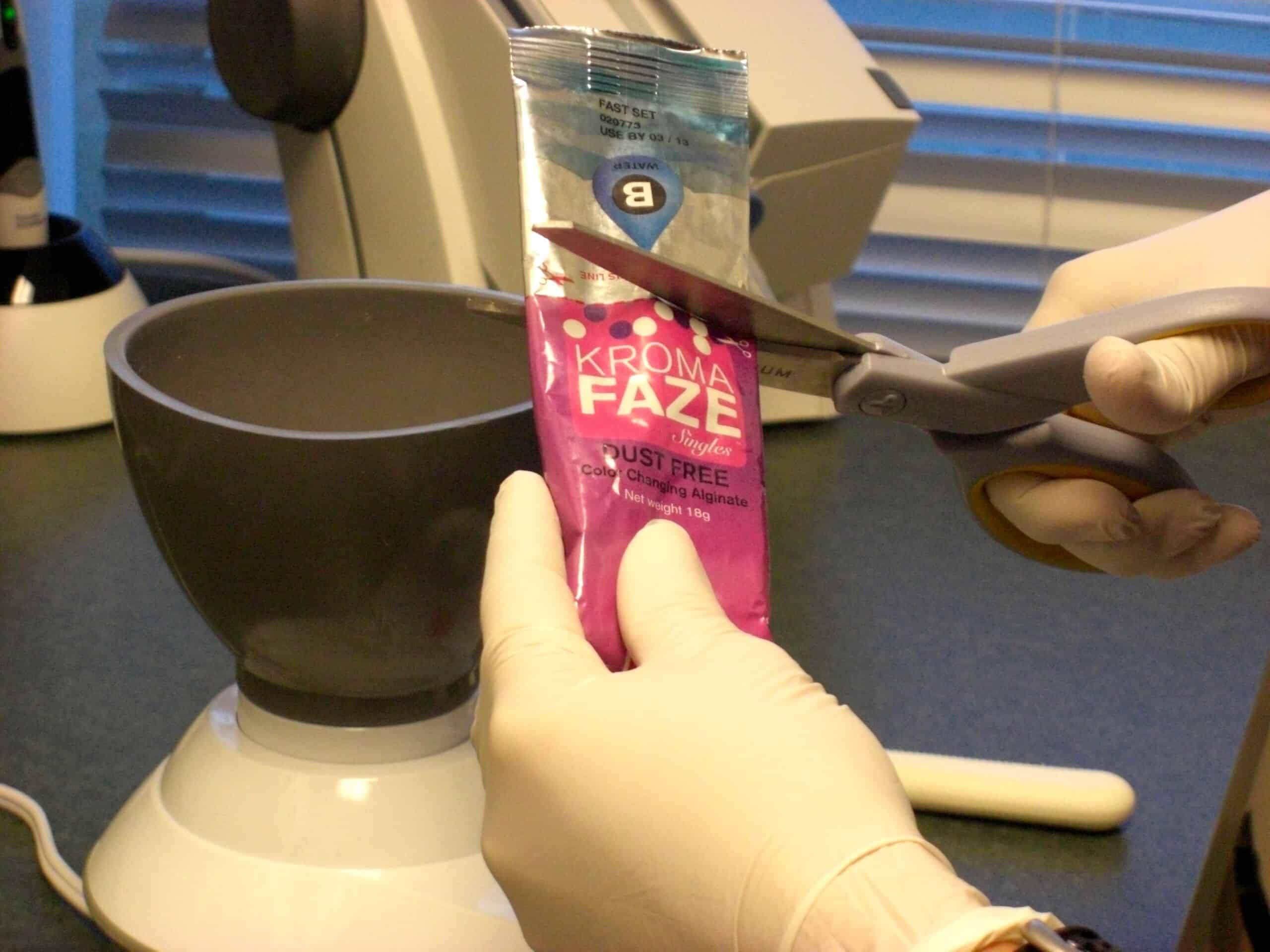Alginate Impression Techniques with Chromaclone by Ultradent

Alginate Impression Techniques
An accurate impression is critical to ensure good appliance fit and minimal chairside adjustment. Impressions that are distorted will inhibit the positive seating for any appliance. Below are several areas to focus on when taking Alginate Impression to perfect your Alginate Impression Technique.
Selecting an Impression Tray for Alginate Impressions
Trays are made of metal, plastic, or Styrofoam and are either disposable or can be sterilized. They may have perforations, mesh liners, or grooves to retain the impression material. Metal and plastic trays without retentive features must be painted with an adhesive to prevent the impression material from separating.
A metal rim lock tray offers retention as well as excellent adaptation. Perforated trays, although retentive, do not provide the same force of alginate adaptation around the dentition because the material flows through the vents before adaptation, minimizing the detail of the teeth and tissue. If choosing a vented tray, select a style with smaller perforations.
The rim lock tray offers more resistance so the material can adapt properly, reducing porosity (air bubbles) and resulting in crisp anatomical detail. Once the tray-type has been identified, the tray size that best fits the patient is selected. The tray should be large enough to avoid impinging the soft tissue or interfering with the dentition and should cover the last tooth in the arch or retromolar pad areas. However, it should not be so large that excess impression material is needed to fill the void between the tray and oral anatomy.
Alginate Impression Material
Once the impression tray has been selected, the next consideration is the type of impression material to be used. Alginate (irreversible hydrocolloid) is the most common material used to make impressions.
Some considerations in selecting an alginate material are accuracy, dimensional stability, setting time, taste, and compatibility with the gypsum or stone.
For patients with a sensitive gag reflex, fast-set alginate is advised, such as Chromaclone by Ultradent https://ultradent.com
An irreversible hydrocolloid, Kromopan changes color during each stage of impression-taking, requires minimal time in the patient’s mouth, and remains dimensionally stable for 48-100 hours before pouring Chromaclone™ 5-day by Ultradent features a unique tri-color changing process indicating the correct time for spatulating (purple), loading the tray (pink), and placement of tray (white).
The shelf life of alginate is approximately one year if stored in a cool, dry environment. An unusually thinner mix is a sign of potential contamination or outdated material, which will cause model distortion and lead to poor appliance fit.
Chromaclone Alginate 5-day alginate by Ultradent® Fast Set time (53 seconds) features a convenient color-changing formula. In comparison, the Extra Fast Set time (45 seconds) is ideal for both young and sensitive patients. In addition, both formulas are available in a Bubble Gum flavor. When the impression has been removed from the patient’s mouth, wrap the alginate impression with a damp paper towel and store it in a sealed plastic bag at room temperature (23°C/73°F) to ensure dimensional stability for up to five days.
